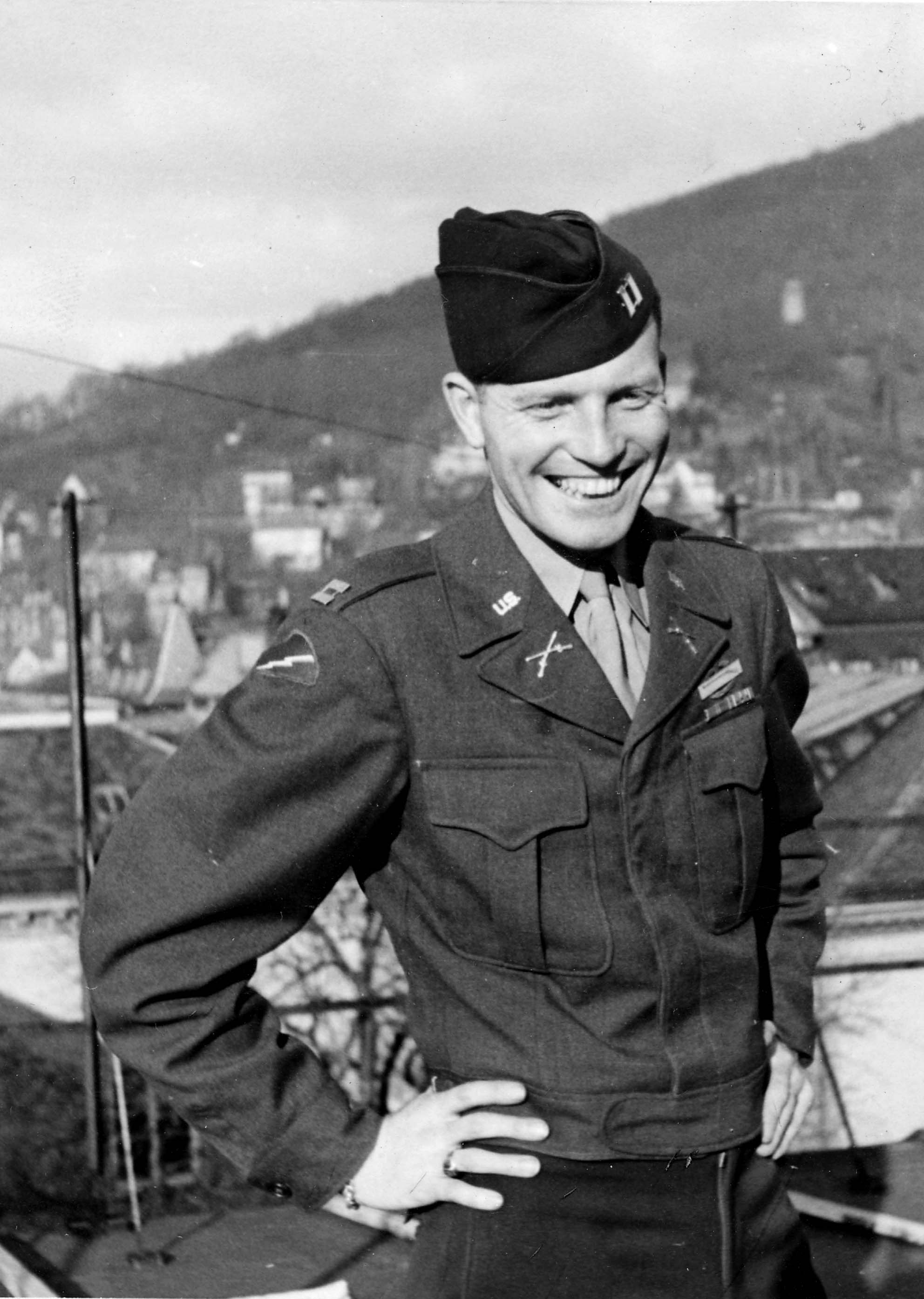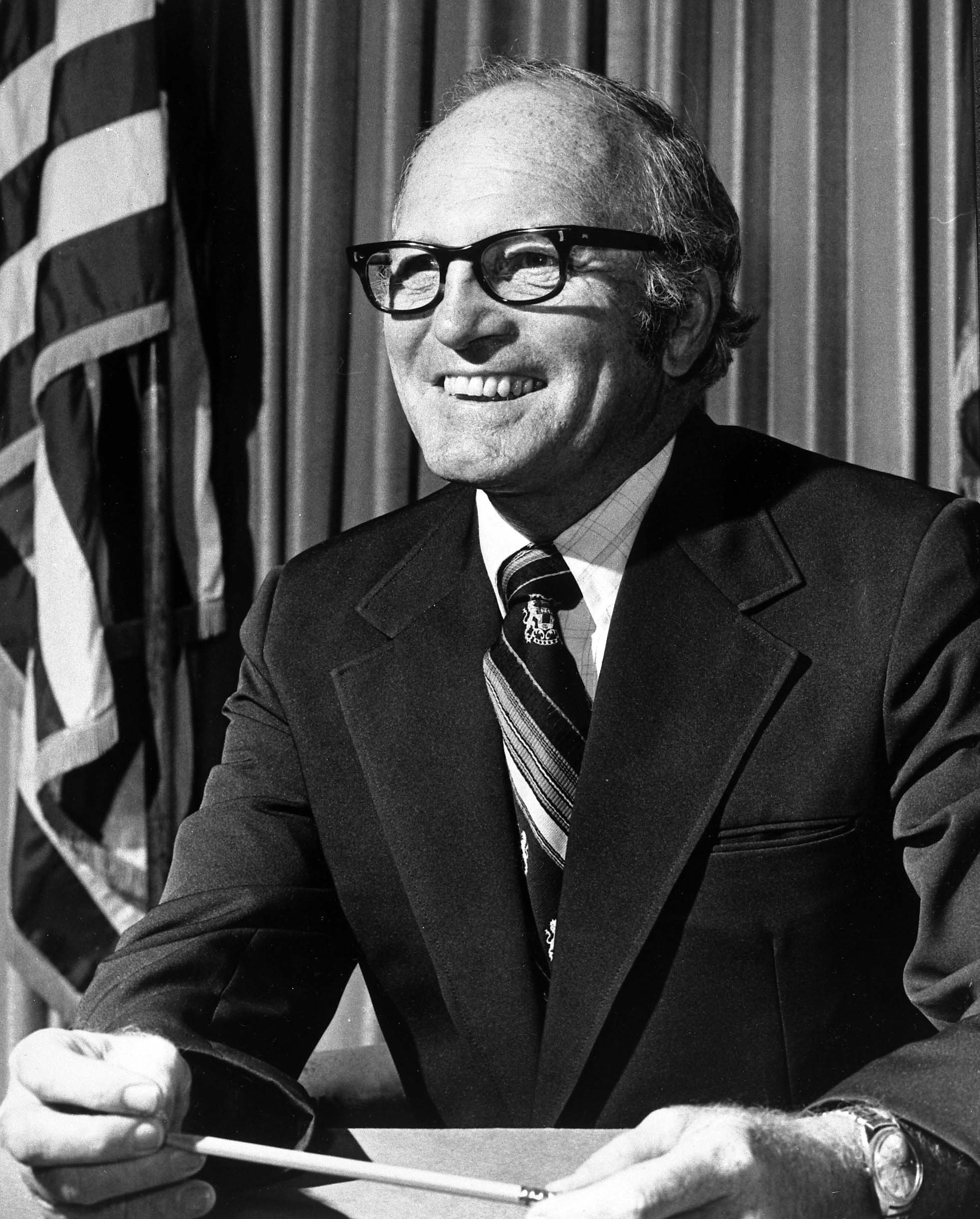Sherwood O. Berg, the gentlemanly former president of SDSU who died Feb. 16 at 94, left his mark on his alma mater in many ways.
You’ve read about the university’s strides on the international stage and Berg’s national prominence in worldwide agriculture. He supported conducting more research and the university’s growth, especially in the colleges of nursing and pharmacy. He expanded the Native American profile on campus. He and Betty (who prefers Elizabeth) were tireless fine arts advocates.
There are also the tangibles, like the school’s agricultural building named in his honor, and the scholarships he and Elizabeth started during their service to the school and supported since. You’ve read about all that.
But there’s one mark he left on the campus that probably many of you will never see.
I discovered it at the very top of the Campanile, scratched in with a pencil on the underside of a rusting metal support near the structure’s apex.
In 1944, before Berg left for Europe as commander of a mortar company in the 78th Infantry Division, he climbed the Campanile.
He told me he squeezed into a niche on his back at the top to print upside-down in pencil as best he could: “Sherwood O. Berg, Class of ’44, Hendrum, Minn.â€
It’s still up there.
Shortly after that Campanile climb, he left his new wife and went off to war.
Berg later recalled his first Thanksgiving overseas. “We were passing through Belgium,†he said. “It was raining. I was in a ditch with only half a shelter to keep the rain off, eating my soggy slice of turkey from a mess kit.â€
By early March 1945, Berg and his mortar men crossed into Germany on the famed Ludendorff Bridge at Remagen, the only crossing over the Rhine into Nazi Germany.
He and his troopers were under fire. They also knew that sooner or later the weakened, shaky bridge would fall. They hoped they made it across before it collapsed. They did.
The bridge finally fell March 17, taking 28 GIs with it.
Berg was later wounded. But until a few days before his death, no one but his wife knew. It happened one evening when he left the safety of his shelter to check on his men.
A German artillery shell exploded nearby and a small piece of shrapnel struck him just below his kneecap. About that time, his unit had been ordered to move out. He told me a few days before his death that “there wasn’t time to go to an aid station, and I didn’t want to miss moving up with the guys.â€
So he ignored his wound until hours later, and he never applied for a Purple Heart.
That was Sherwood Berg. Always concerned about the success and well-being of others.
A year after his soggy Thanksgiving dinner in a Belgium ditch, Berg was celebrating victory and eating a turkey dinner at the officers club in Heidelberg, Germany.
After the war, he returned to Brookings and completed his work for a bachelor’s degree, then headed to Cornell and marched on to a doctorate at the University of Minnesota.
Because of his knowledge and expertise in international agriculture, he served on many national posts and committees.
Now this wonderful man and compassionate leader has left us.
The next time you pass by the Campanile, think about Sherwood O. Berg, Class of ’44.
He’ll be up there every day now, at the top, near the light, where he left his mark 70 years ago.








